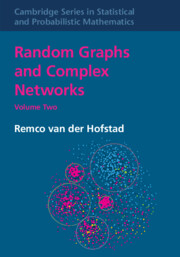Refine search
Actions for selected content:
52353 results in Statistics and Probability
Malaria in pregnancy: Meta-analyses of prevalence and associated complications
-
- Journal:
- Epidemiology & Infection / Volume 152 / 2024
- Published online by Cambridge University Press:
- 13 February 2024, e39
-
- Article
-
- You have access
- Open access
- HTML
- Export citation
Scaling limit of the local time of random walks conditioned to stay positive
- Part of
-
- Journal:
- Journal of Applied Probability / Volume 61 / Issue 3 / September 2024
- Published online by Cambridge University Press:
- 13 February 2024, pp. 1060-1074
- Print publication:
- September 2024
-
- Article
- Export citation
Decentralized crowdsourcing medical data sharing platform to obtain chronological rare data
-
- Journal:
- Data & Policy / Volume 6 / 2024
- Published online by Cambridge University Press:
- 12 February 2024, e9
-
- Article
-
- You have access
- Open access
- HTML
- Export citation
On the use of smart hybrid contracts to provide flexibility in algorithmic governance
-
- Journal:
- Data & Policy / Volume 6 / 2024
- Published online by Cambridge University Press:
- 12 February 2024, e8
-
- Article
-
- You have access
- Open access
- HTML
- Export citation
Antimicrobial resistance in the United States: Origins and future directions
-
- Journal:
- Epidemiology & Infection / Volume 152 / 2024
- Published online by Cambridge University Press:
- 12 February 2024, e33
-
- Article
-
- You have access
- Open access
- HTML
- Export citation
Fair valuations of insurance policies under multiple risk factors: A flexible lattice approach
-
- Journal:
- ASTIN Bulletin: The Journal of the IAA / Volume 54 / Issue 2 / May 2024
- Published online by Cambridge University Press:
- 12 February 2024, pp. 385-409
- Print publication:
- May 2024
-
- Article
-
- You have access
- Open access
- HTML
- Export citation
The discrete-time arbitrage-free Nelson-Siegel model: a closed-form solution and applications to mixed funds representation
-
- Journal:
- Annals of Actuarial Science / Volume 18 / Issue 2 / July 2024
- Published online by Cambridge University Press:
- 12 February 2024, pp. 310-341
-
- Article
-
- You have access
- Open access
- HTML
- Export citation

Random Graphs and Complex Networks
-
- Published online:
- 08 February 2024
- Print publication:
- 08 February 2024
Frontmatter
-
- Book:
- Random Graphs and Complex Networks
- Published online:
- 08 February 2024
- Print publication:
- 08 February 2024, pp i-iv
-
- Chapter
- Export citation
COVID-19 passenger screening to reduce travel risk and translocation of disease
-
- Journal:
- Epidemiology & Infection / Volume 152 / 2024
- Published online by Cambridge University Press:
- 08 February 2024, e36
-
- Article
-
- You have access
- Open access
- HTML
- Export citation
SEMIPARAMETRIC ESTIMATION AND VARIABLE SELECTION FOR SPARSE SINGLE INDEX MODELS IN INCREASING DIMENSION
-
- Journal:
- Econometric Theory / Volume 41 / Issue 3 / June 2025
- Published online by Cambridge University Press:
- 08 February 2024, pp. 617-659
-
- Article
- Export citation
8 - Small-World Phenomena in Preferential Attachment Models
- from Part III - Small-World Properties of Random Graphs
-
- Book:
- Random Graphs and Complex Networks
- Published online:
- 08 February 2024
- Print publication:
- 08 February 2024, pp 326-380
-
- Chapter
- Export citation
7 - Small-World Phenomena in Configuration Models
- from Part III - Small-World Properties of Random Graphs
-
- Book:
- Random Graphs and Complex Networks
- Published online:
- 08 February 2024
- Print publication:
- 08 February 2024, pp 289-325
-
- Chapter
- Export citation
Dedication
-
- Book:
- Random Graphs and Complex Networks
- Published online:
- 08 February 2024
- Print publication:
- 08 February 2024, pp v-vi
-
- Chapter
- Export citation
Index
-
- Book:
- Random Graphs and Complex Networks
- Published online:
- 08 February 2024
- Print publication:
- 08 February 2024, pp 486-490
-
- Chapter
- Export citation
Part I - Preliminaries
-
- Book:
- Random Graphs and Complex Networks
- Published online:
- 08 February 2024
- Print publication:
- 08 February 2024, pp 1-2
-
- Chapter
- Export citation
Part II - Connected Components in Random Graphs
-
- Book:
- Random Graphs and Complex Networks
- Published online:
- 08 February 2024
- Print publication:
- 08 February 2024, pp 95-96
-
- Chapter
- Export citation
5 - Connected Components in Preferential Attachment Models
- from Part II - Connected Components in Random Graphs
-
- Book:
- Random Graphs and Complex Networks
- Published online:
- 08 February 2024
- Print publication:
- 08 February 2024, pp 189-242
-
- Chapter
- Export citation
Possible Course Outlines
-
- Book:
- Random Graphs and Complex Networks
- Published online:
- 08 February 2024
- Print publication:
- 08 February 2024, pp xv-xvi
-
- Chapter
- Export citation
Part IV - Related Models and Problems
-
- Book:
- Random Graphs and Complex Networks
- Published online:
- 08 February 2024
- Print publication:
- 08 February 2024, pp 381-382
-
- Chapter
- Export citation
